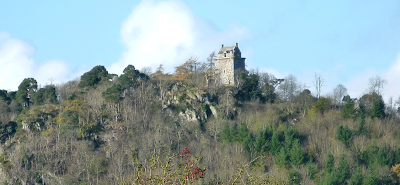
Smithfield, sandwiched between St Bartholomew's Hospital (founded 1123) and Smithfield meatmarket (slightly older) has seen numerous executions. More than 200 Protestant martyrs were burnt at the stake in the reign of Queen Mary, swindlers and coin forgers were boiled in oil there and Sir John Oldcastle, the original Falstaff was roasted alive in chains. But the only plaque is that to Sir William Wallace.
Only a few feet away is the lovely Church of St Bartholomew the Gre
 at. It has been in continuous use as a place of worship since 1143, is adjacent to the oldest inhabited house in London and has featured in such films as 'Shakespeare in Love' and 'Four Weddings and a Funeral'.
at. It has been in continuous use as a place of worship since 1143, is adjacent to the oldest inhabited house in London and has featured in such films as 'Shakespeare in Love' and 'Four Weddings and a Funeral'.There is an odd connection here. Wallace was executed on the Eve of St Bartholomew's Day 1305. The Bartholomew Fair at Smithfield seems to have been a great party. Was Wallace's Execution the day preceding perhaps a curtain raiser to the celebrations? This might have appealed to Edward Longshanks.
PS. In Scotland we have a wonderful monument to Sir William near the site of his most famous victory; it's a pity that other significant places in his life are not well cared for.
























































